I will never forget it. It was about 1990 and I was sitting in my 1983 Ford Escort outside of my high school; when I likely should have been sitting inside my high school. I was bored and started turning the radio dial and stumbled on a local AM oldies station. The station soon became a part of my every day life and the pop music of the 1950’s and 1960’s embedded itself deep inside of me. I had been listening to oldies since someone in my family bought my brother and I the Fonzie’s Favorites record album of old songs. That record came out in 1976 so likely I was 5 or 6 years old when I first fell in love with this music. But finding that local station in 1990 made oldies my primary listening focus.
I say all that to say all this; when I look back on my teenage years, my reminiscences include the music of this era – just like someone 30 years older than me. I look back fondly on the days in Apartment Zero – my one-room bachelor apartment – where Oldies 1090 played from morning until night. One of the regulars on this radio station’s playlist was a group I already knew and loved, Tommy James & the Shondells.
Believe me when I say that there is something unique about Pennsylvania. So often the people I am researching hail from the Keystone State. And Tommy James? Well, he doesn’t but wait. Born Thomas Gregory Jackson in Dayton, Ohio, Tommy and his family moved to Michigan where 4-year-old Tommy became a model. When he was 12, he formed a band and when he hit 17, that band changed their name to the Shondells. Jack Douglas was a Michigan DJ who formed his own label, Snap Records. Jack recorded lots of local talent and young Tommy took his band into Snap’s studios armed with a tune that had been written and recorded by the legendary songwriting team of Jeff Barry and Ellie Greenwich, “Hanky Panky”. Small-time Snap Records could not promote the record, though and it was soon forgotten. But then Pennsylvania got involved. As did organized crime.
For reasons lost to history, I suppose, an enterprising Pittsburgh-area bootlegger started pressing copies of the single and sold 80,000 in ten days. Additionally, a Pittsburgh dance promoter had found “Hanky Panky” in a used record bin and began playing it at dances and on local radio. Realizing he was “big in Pittsburgh”, James went there to meet with those on the local record scene. A couple of them agreed to travel with James to New York City in search of a record deal. Roulette Records became excited and signed Tommy. Problem was, Tommy no longer had a band as the Shondells had since broken up. At this point, Tommy adopted the name “Tommy James” and went in search of a band.
Roulette began to put their ample muscle behind “Hanky Panky” and the single rose to the top of the charts in the summer of 1966. Interestingly, the song was not re-recorded for this national release; it was the same amateurish-sounding rave-up Tommy and his first group had cut in ’64. James himself says that this raw sound is what made it a hit and it became an early garage rock staple. Tommy found himself a group called the Raconteurs out of Latrobe, Pennsylvania, hometown of Arnold Palmer and Fred Rogers. He walked up to them and asked if they would like to be the new Shondells and they agreed though some members left and others were added before the group really took off.
A word about Roulette Records. Tommy James has an autobiography out called Me, the Mob and the Music: One Helluva Ride with Tommy James and the Shondells. In all my years loving this band I had never heard anything about their involvement with organized crime. Harlem’s Morris Levy (1927-1990) was half-a-mobster and a major player in the record business in the 1950’s and ’60’s. He founded Roulette in 1957 and ruled it with an iron fist, reportedly robbing many of his artists of owed royalties. While Roulette was a sometime home to such artists as Louis Armstrong, Count Basie, Jimmy Bowen and Buddy Knox, James claims in his book that it was not much more than a front for the Genovese crime family, effectively laundering money for the syndicate. James does say though that Levy and Roulette cared little about an artist’s sound and they gave James complete artistic freedom; the label was more interested in siphoning money off for itself and James said he was cheated out of upwards of $40 million. Morris Levy – the inspiration for the character Herman “Hesh” Rabkin on The Sopranos – was eventually convicted of extortion but died before he could serve time.
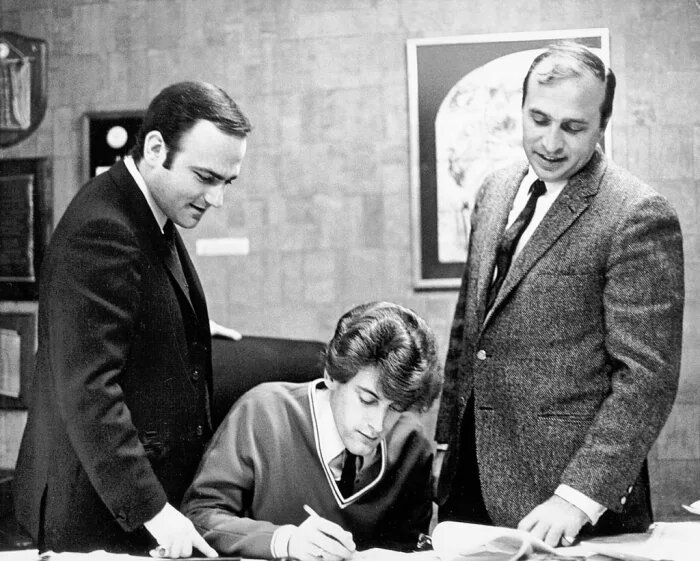
By the time Tommy James and the Shondells had scored a major hit with “I Think We’re Alone Now” in early 1967, the group had been hung with the appellation “bubblegum pop”. While this great track, that reached #4 on the Pop charts, is considered one of the very first bubblegum hits, James was disgruntled with that tag. Also interesting to note that like many early Shondells hits, the recording featured mainly session musicians. “I Think We’re Alone Now” was written by Ritchie Cordell, who would go on to write and produce many hits for the group.
The group’s next hit was also from their third album, I Think We’re Alone Now. “Mirage” came about when a producer accidentally put a tape of “I Think We’re Alone Now” on backwards. Tommy and the group liked the sound and lyrics were added. “Mirage” went to Number Ten.
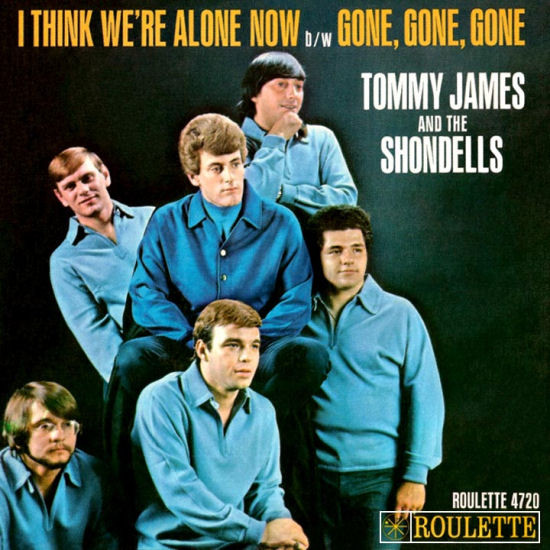
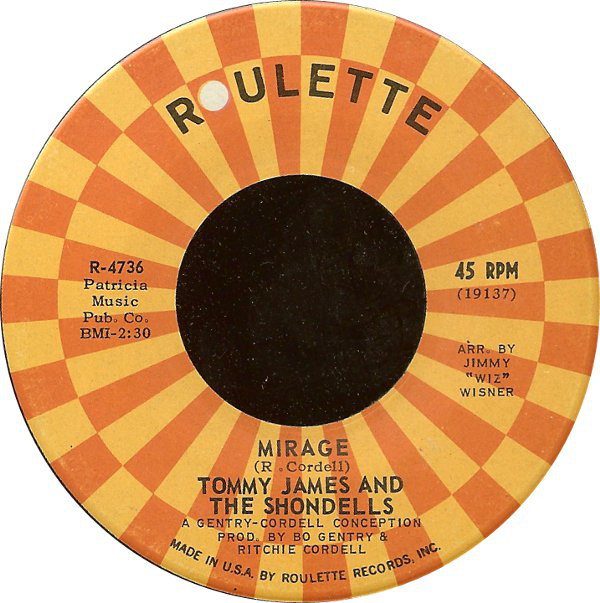
1968 was a pivotal year for the group and the start of the second half of the band’s successful run. In the spring of that year, the group was in the studio – where they were now operating as a self-contained unit – and they had just laid down a solid backing track to a song that as yet had no lyrics. Writing with Cordell, Tommy says the two were stumped and were about to pack it in for the day when Tommy took a break out on the terrace of his Manhattan apartment. There he looked up a saw the massive illuminated sign for the Mutual of New York bank; “M-O-N-Y”. James has said it was serendipitous and that if he had looked the other way, “Mony Mony” would’ve been called “Hotel Taft”. “Mony Mony” became the group’s biggest hit since “Hanky Panky”, reaching #3 on the US Pop charts and actually topping the Pop charts in the UK.
“Do Something to Me” was a similar-sounding song to “Mony Mony”; a song seemingly recorded live in a party atmosphere. Continuing their style of garage or frat rock, “Do Something to Me” was a Top 40 song for the group in the fall of 1968. Plans were to include it on the next album from Tommy James and the Shondells. Now that the group were writing and performing their own songs, James wanted to forever shed any connections between his outfit and the less-significant sounds of garage or bubblegum pop. For their next album, the Shondells followed many of their contemporaries into psychedelic rock.
Tommy wrote the song “Crimson and Clover” with Shondells drummer Peter Lucia and the group went into the studio with the intention to strike out on an ambitious new direction for the band. While they were working on the song, Roulette began clambering for a new single. Tommy released “Do Something to Me” to buy the group some time. As it was eventually included on the Crimson and Clover LP, “Do Something to Me” really serves as a bridge between the two sounds the band plied. “Crimson and Clover” was recorded in one five-hour session, one of the first to utilize 16-track technology. The song features a striking tremolo effect from the guitar as well as from the vocals as Tommy ran his microphone through a guitar amplifier with the tremolo turned on. The single was released in November of ’68 and after an appearance on The Ed Sullivan Show on January 26th, 1969, the song hit #1. It also topped charts in Canada, New Zealand, South Africa and Switzerland, hitting the top 3 in a total of 9 countries.
The shorter, single version of “Crimson and Clover” on The Ed Sullivan Show, January 26th, 1969.
The album began to climb the charts on the strength of its two Top 40 singles. The LP also contains a song reminiscent of Simon & Garfunkel in “Kathleen MacArthur”, with lyrics telling the old story of the poor gardener who works on Kathleen’s estate and falls in love with her. This is followed though by the extremely psychedelic “I am a Tangerine”; “Hello, banana. I am a tangerine”. The absolutely delightful “Sugar on Sunday” starts the second side and is one of the better hidden gems of this era. Tommy’s own “I’m Alive” appears near the end of the record. The previous year, Tommy had given the song to singer Johnny Thunder and his version was so substantial that it even rated a positive notice from Bob Dylan in a Rolling Stone interview. The assertive, declarative tune was later recorded by Tom Jones for his 24 Hours album of 2008.
The Crimson and Clover album also features one of my all-time favourite Tommy James songs, “Crystal Blue Persuasion”. The oldies for me are a very springtime experience. There is something fresh about the sound of particularly late Sixties pop/rock that simply sounds to me like that time of year. If that is the case then “Crystal Blue Persuasion” is the epitome of this feeling as it sounds like the brightest, warmest spring morning. It starts with gentle bongos and when the floating acoustic guitar sidles in you are indeed in a warm, blue place. Decidedly less far-out than the rest of the record, the song is like many of the era in that it promotes “peace and good brotherhood”. While it was assumed that the title referenced the blue-coloured LSD tablets in circulation at the time, Tommy was instead inspired by the Bible and its many references to a time when people would live in harmony. A testament to the song’s serenity and mellowness, it was the group’s only single to chart on the Adult Contemporary listings where it peaked at #27. On the Pop charts, it was one of the group’s biggest hits, reaching #2. The song is absolutely delightful. A last word about the Crimson and Clover album; it featured liner notes by Hubert Humphrey. The group had toured with the Vice President during his presidential campaign and Humphrey wrote the notes in gratitude.
Before “Crystal Blue Persuasion” had been released as a single, the band had put out the excellent “Sweet Cherry Wine”, another psychedelic song that contained lyrical imagery that referenced both the war in Vietnam and Jesus Christ. The song employed the new Moog synthesizer, an instrument the band would make much use of on their follow-up to Crimson and Clover, Cellophane Symphony. With an inscrutable cover and an uneven set list, this record was one of many put out at the time from various bands that attempted to out far-out each other. The title track was a 9-minute excursion into Moog-land as the synthesizer swirled and ebbed and flowed its way into nothingness. Tommy has said that the cellophane of the title referred to the plastic music that was being made at the time with new electronic instrumentation. From here, though, the record goes into a pretty good rocker perfect for driving in your car, “Makin’ Good Time”. Goofy songs that were going for laughs included “Papa Rolled His Own” about an old guy in the back yard who apparently starts a fire while trying to have a smoke and “On Behalf of the Entire Staff and Management”, about a man retiring from a company that doesn’t seem to care about him. A good acoustic strummer is found in “I Know Who I Am”.
Also in 1969, the band released their first compilation album that featured one new song, the great tune “Ball of Fire” that reached the Top 20. Many sunsets in spring still find me singing this gem; “there’s a ball of fire in the sky that keeps a-watchin’ over you and I, way up high”. Then came an invitation for the Shondells to perform at Woodstock. That storied event has obtained mythic status but at the time it was a different animal. James received a call while in Hawaii asking him and his group to play “at this pig farm in upstate New York”. Not only did this not sound appealing but James was 6000 miles away. James refused and we are left to wonder how the sound of the Shondells would have gone over with the unwashed masses at Max Yasgur’s farm.
In March of 1970, Tommy James and the Shondells released Travelin’. It would be the group’s last release and featured one last stellar song. “Gotta Get Back to You” is a solid rocker that reached #45 and the record also contained the group’s last Top 40 hit, “She”. In that same month, the band was performing in Birmingham, Alabama and after the show James collapsed from exhaustion and from a reaction to the drugs he had been taking in ever-increasing quantities. At one point, he was actually pronounced dead but James rallied. He decided to put the band on hiatus and rest and recuperate. Part of his convalescence included writing and producing the excellent “Tighter and Tighter”, the only Top 40 hit – it reached #7 – for Alive N Kickin’, a Brooklyn band that James briefly took under his wing. Tommy James entered the Seventies then as another star of the Sixties who had barely made it out alive. His group had been one of the more successful, having charted a Top Ten album, two #1 singles and 14 Top 40 hits.
The band’s hiatus became permanent but James himself, after a brief period of recovery, reemerged later in 1970 and released three solo albums in the span of 18 months. The second of these was the most successful. Christian of the World (1971) was a more overt exploration of Tommy’s Christian faith, something he had often made veiled references to while with the Shondells. The album reached #131 on Billboard‘s album charts but is best known for adding a final gem to Tommy’s canon. “Draggin’ the Line” is driven by a great bass line and this groovy “psychedelic shuffle” was a major hit and has since been revisited by many artists. Tommy’s version hit #4 in the summer of ’71. One of the many cover versions of the song include REM’s take that appeared on the soundtrack of the film Austin Powers: The Spy Who Shagged Me. Tommy’s final offering on Roulette Records was My Head, My Bed and My Red Guitar (1971), a country-flavoured album he recorded in Nashville. How did Tommy James end up in Nashville, you ask? Roulette’s Morris Levy had always taken a fatherly interest in Tommy. When the Genovese crime family became embroiled in a bloody gang war, Levy worried that James might become a target so he told Tommy to lam it to Nashville where organized crime had little hold. While laying low, Tommy made friends and a record.
Like many hit-makers of the ’60’s, Tommy James’ visibility dimmed as the Seventies wore on. He was signed by Fantasy Records in mid-decade and released two albums for the label. 1976’s In Touch contained his own version of “Tighter and Tighter”. Tommy then moved on to Millennium Records, founded by record producer Jimmy Ienner. The short-lived Millennium released hits by electronic music pioneer Meco and Don McLean. Tommy’s Three Times in Love charted in 1979 and the title track was his final hit. The single hit #19 Pop and actually topped the Adult Contemporary chart. Tommy’s stay at Millennium was brief – and after the label passed on Madonna in 1981, they went into receivership. James would return to release Hi-Fi (1990) for small label Aegis. It’s a pop-y record I amazingly found on CD at a thrift store.
Tommy James and the Shondells became one of the most often-covered groups of the 1960’s. Eighteen of Tommy’s songs have been covered by upwards of 150 artists. Most notably, in a five-year span in the 1980’s, three different artists had big hits with three different songs associated with James. In December of 1981, Joan Jett & the Blackhearts burst onto the scene with their debut LP and the #1 song “I Love Rock ‘n’ Roll”. Former James associates Ritchie Cordell and Kenny Laguna were working with Jett at this time which may account for the Blackhearts offering “Crimson and Clover” on this record. It was released as the second single and charted in the new year, eventually reaching #7. Then later in the ’80’s Tommy James really made his mark on the charts through other artists. In 1987, 15-year-old Tiffany released her debut album which featured “I Think We’re Alone Now”. Her synth-pop, dance music rendering reached the #1 spot on the Pop charts where it stayed for two weeks – only to be knocked off the top spot by yet another cover of a Tommy James and the Shondells song. History has surely recorded only one such instance as this. In 1981, English rocker Billy Idol recorded a version of “Mony Mony” for an EP. In ’87, a live version of the song was rising on the charts and eventually knocked Tiffany out of the #1 slot. Twenty years later, back-to-back #1 songs that were cover versions of a single artist’s work. At the end of ’87, Tiffany’s tune was ranked the #18 song of the year – and Idol’s cover was #19. Additionally and astonishingly, Dolly Parton would record “Crimson and Clover” – with James as special guest – on her 2005 album Those Were the Days.
I’ve been wanting to write about Tommy James and the Shondells for a while and many of you will likely understand when I explain why. I love their music, first and foremost. But their appeal for me is also where – and when – I was when I first encountered them. Hearing them now always takes me back. Often I will watch a movie – duh. During the movie, I may be rolling my eyes and thinking it is awful (although that doesn’t happen often). But the next day at work, I will look back fondly on the night before when I watched that movie. Or perhaps throughout the winter I work my way through an old TV series. Maybe while watching I was surprised to learn that the show wasn’t always good or this first season they hadn’t worked their characters out, etc. But comes the spring and I won’t recall the episodes I didn’t enjoy as much as I will remember “how I watched The Rockford Files last winter” and it will be a good memory. Sometimes, then, the memory of something can be better than actually experiencing it firsthand.
In the case of Tommy James, again, I love his music. Full stop. But almost as much I love the memory of listening to him on cassette in my crappy, old Escort with the terrible stereo. I love the memory of sitting in my parents’ basement, listening to the band’s great Anthology album on tape and playing Links Golf on our old PC-386 hunk of junk computer. As I said at the outset, James takes me back. Not only can I still enjoy his music today but it can serve as a portal through which I can re-enter – through the glory of memory – the days of my youth. Those of you who are living this vintage life with me can probably understand the value of anything that takes you back; to your own past or any past.
I was prompted to write this article when in 2021 Cherry Red Records released Celebration: The Complete Roulette Recordings 1966-1973. If you are more a casual fan, then I highly recommend you pick up Rhino’s Anthology (1989) which contains every essential James track. But if you want it all, you can have it all with Celebration. And I don’t know about current pricing but I got it very reasonable. It contains every Tommy James and the Shondells album and every single and B side they released. This includes the band’s rare final album, 1970’s Travelin’. You can perhaps also look up the Crimson and Clover/Cellophane Symphony two-fer that’s out there if you want to hedge. Celebration, though, also contains Tommy’s first three solo albums which are not easily found elsewhere. For a Tommy James and the Shondells fan, this collection is truly a chance to own every, single glorious bit of it.
10 from Tommy James and the Shondells
- I Think We’re Alone Now
- Mony Mony
- Do Something to Me
- Crimson and Clover
- Sugar on Sunday
- Crystal Blue Persuasion
- Sweet Cherry Wine
- Ball of Fire
- Gotta Get Back to You
- Draggin’ the Line
Listen to “Gettin’ Together with Tommy James” every Saturday from 5 to 8 PM EST on Sirius XM’s 60s on 6
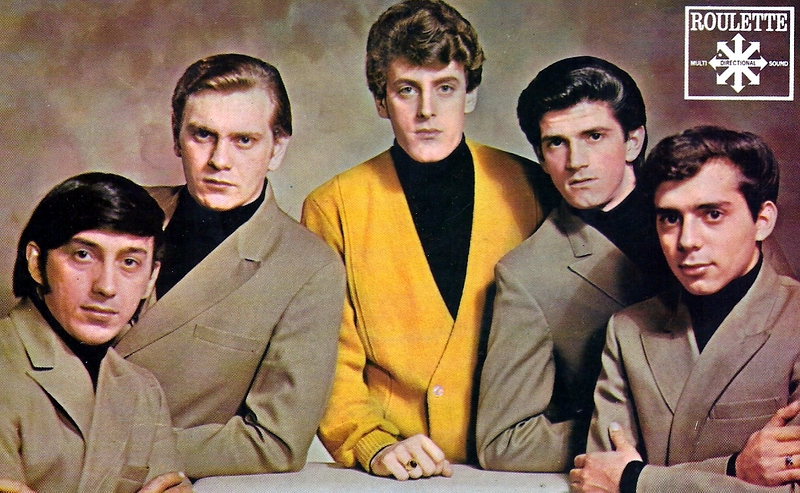
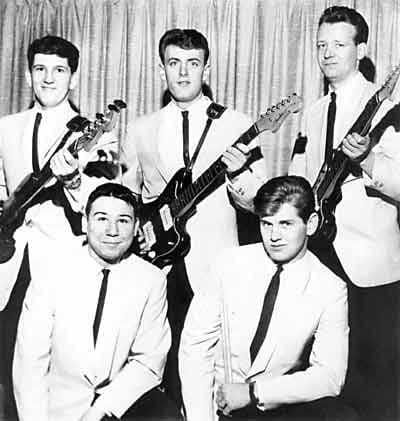
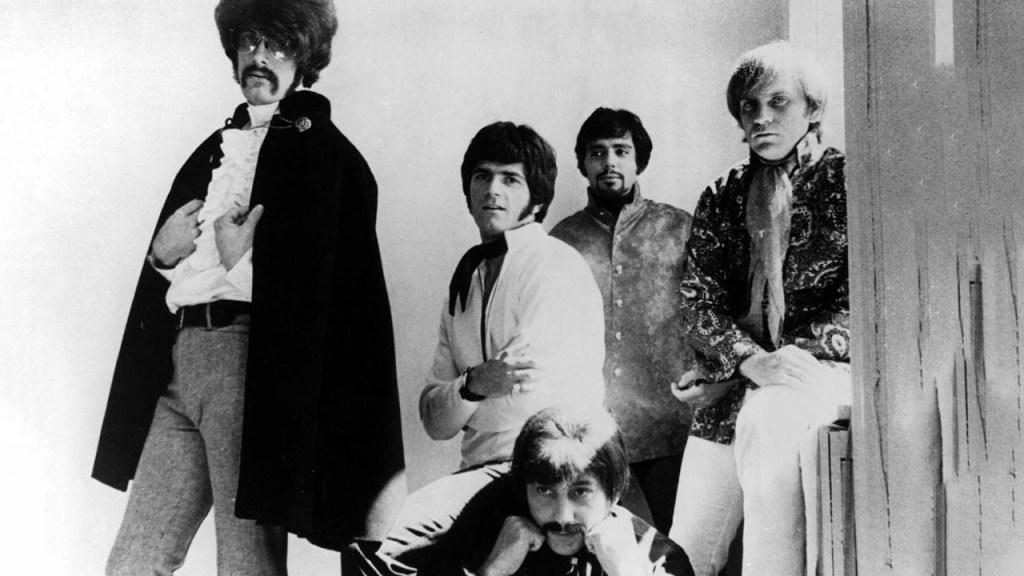
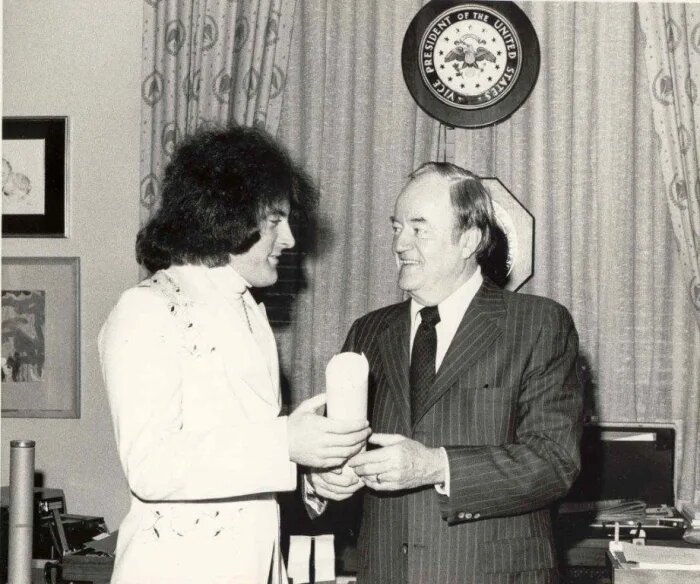
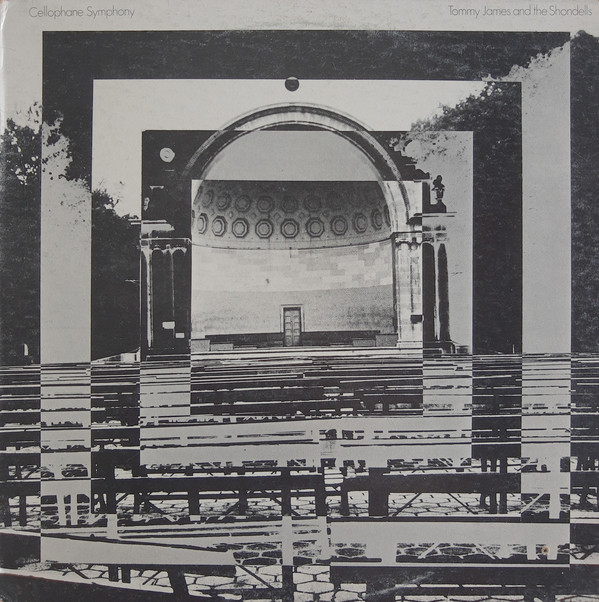
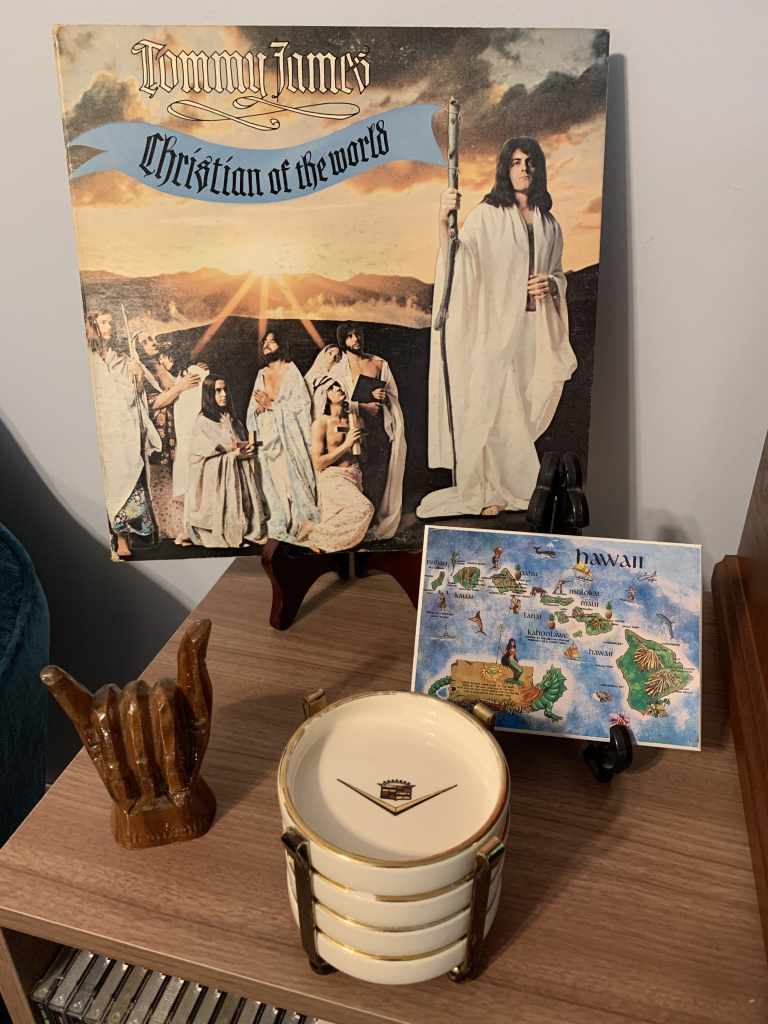
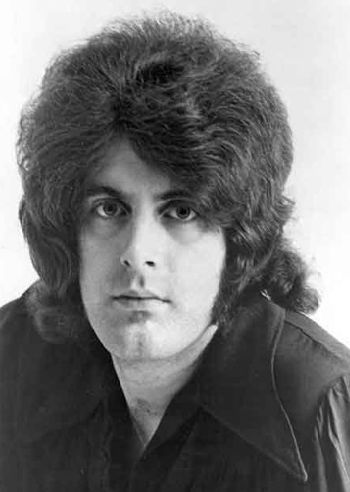
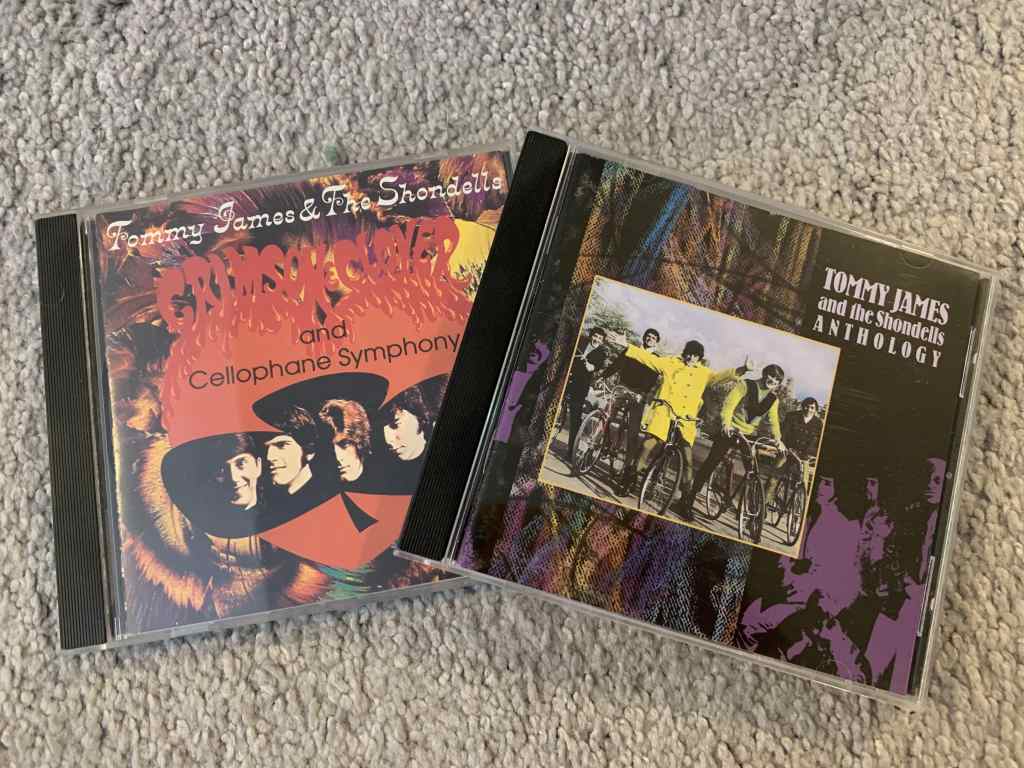
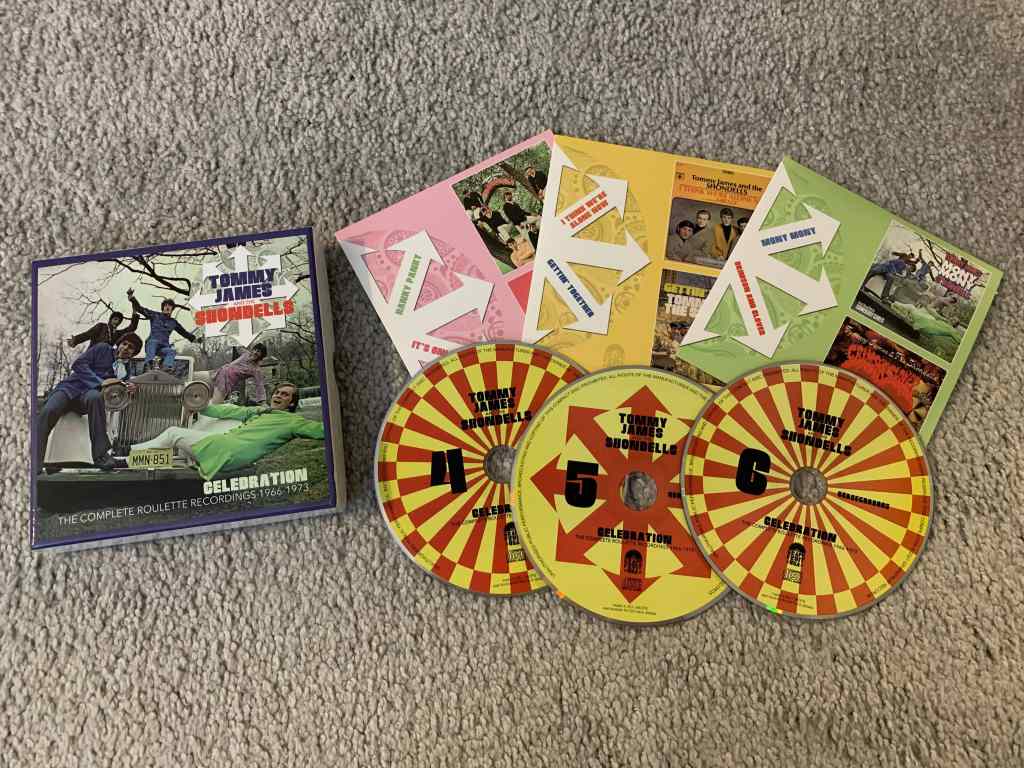
Once again, totally fascinating. It’s funny, but reading the passage about Roulette Records and the crime connections I immediately thought of Hesh even before you alluded to the Sopranos connection. I might be mis-remembering this, but I half recall a conversation with Tony Soprano when Hesh mentioned that his huge wealth was from the fact that he had written all these hit records, and Soprano basically told him that he hadn’t written them at all, and had just given himself the songwriting credit at the expense of the artist. Which sounds alarmingly familiar.
Referring to Tommy James, it’s fascinating how some artists have been so enormously influential but to a degree have slipped from the forefront of our awareness, although their work is everywhere
You probably remember correctly as The Sopranos was always SO GOOD at placing those accurate pop culture references into their scripts. I can totally imagine Tony saying that though I don’t recall exactly.
Tommy sure is one of those artists that doesn’t get his due. He may get lumped in with the Turtles and Rascals and Grass Roots, etc. And that may be fair but there also may be a bit more going on in Tommy’s case. He had help, sure, but he was the only constant through the band’s success. A lot of it is due to him. Still can’t get over Dolly doing Crimson and Clover!